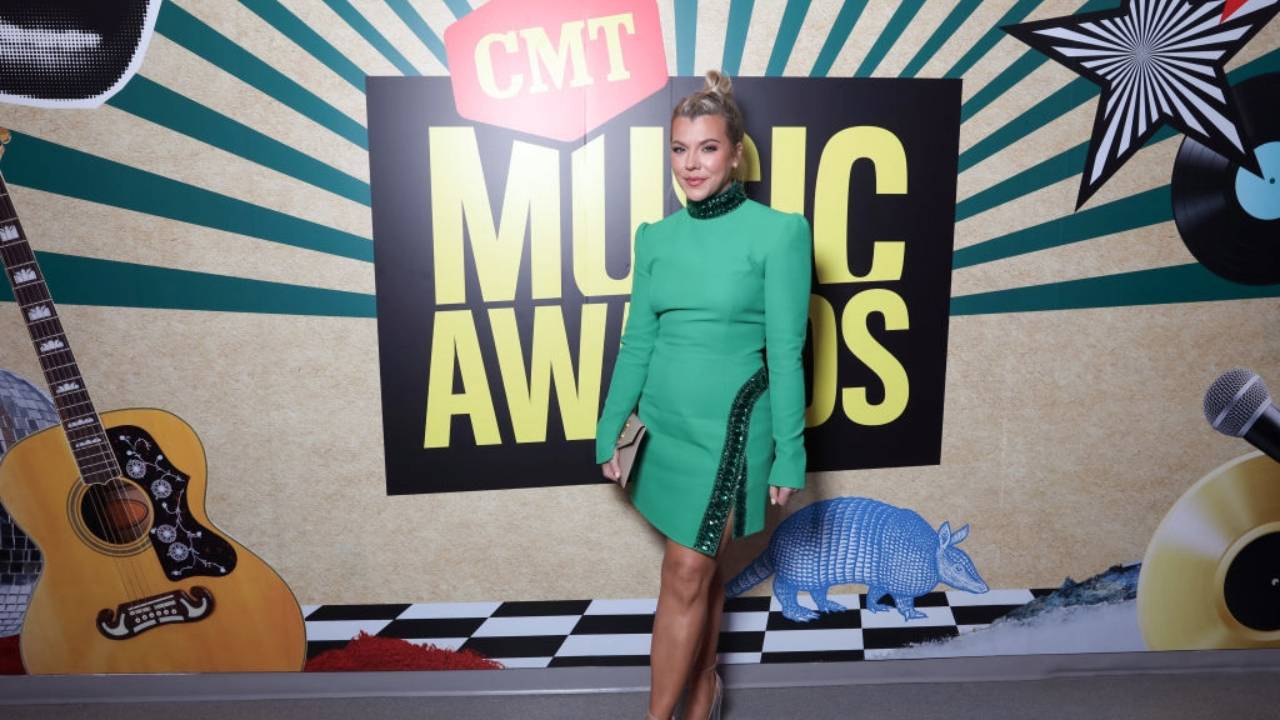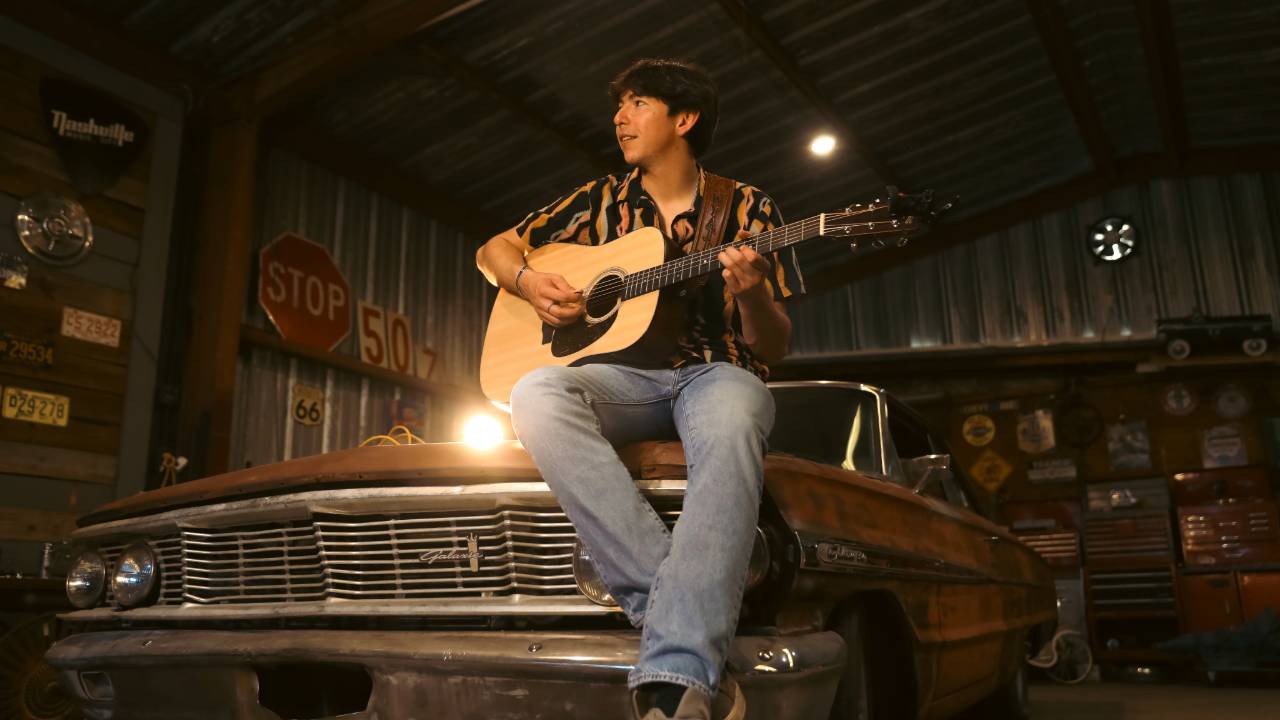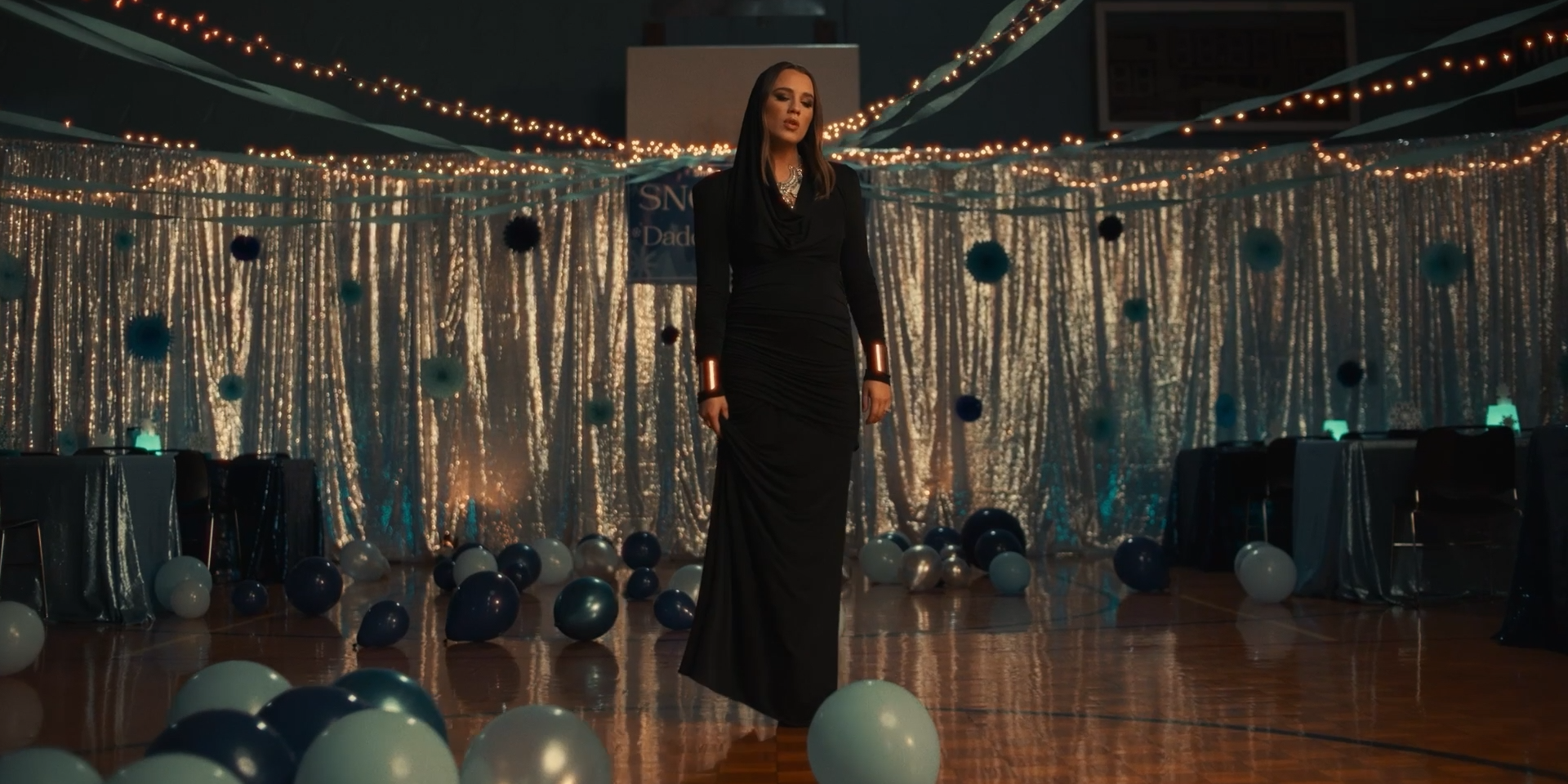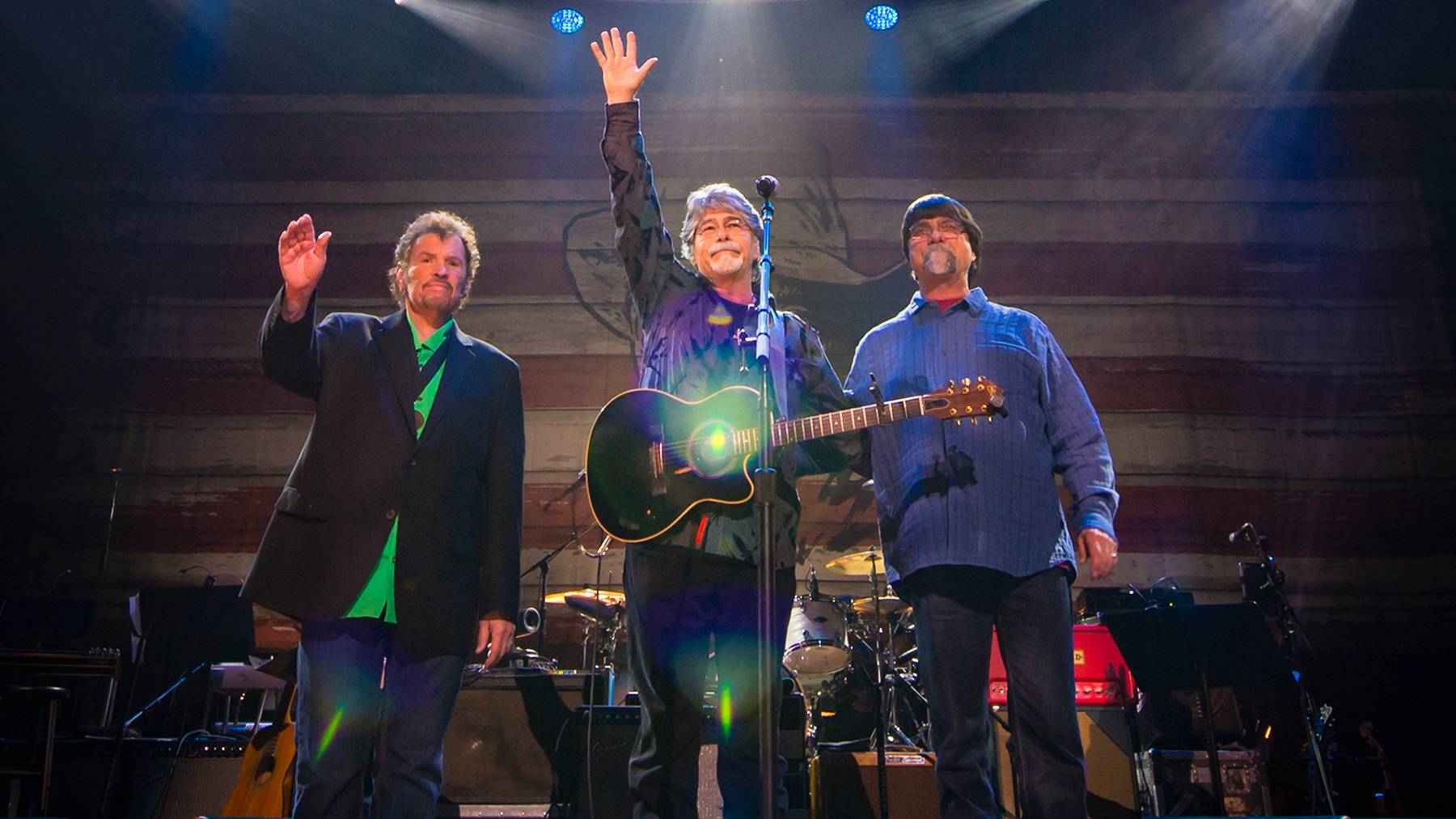Grand Opening May 17: A Closer Look at the New Country Music Hall of Fame and Museum
The Country Music Hall of Fame has released details about its upcoming grand opening. Country.com is passing the news along to our readers.
On May 17, the country music artist community -- including the cast of the Grand Ole Opry and the membership of the Country Music Hall of Fame -- will be joined by music fans, the music industry, national and local civic and business leaders, journalists and cultural tourists from around the world for a landmark moment in country music history -- the public grand opening of the brand new Country Music Hall of Fame and Museum.
Originally located on Nashville's Music Row, the Hall of Fame and Museum has been the home of America's music since 1967. The colossal new $37 million structure -- located in the heart of downtown Nashville -- is a world-class facility that will honor the cultural significance of the music and the heroic achievements of those who form its membership.
According to Kyle Young, Director of the Hall of Fame, the new facility is poised to carry the heritage of country music into the 21st century, while continuing to chronicle the ever-evolving genre. The new Country Music Hall of Fame and Museum promises a unique historical and entertainment experience for every generation of country fans.
This new shaping and interpretation of the music takes into account all that the museum staff has learned in the past 33 years, Young said. This is a completely new vision of how to communicate what country music means and has always meant to our culture, and we expect the experience to have an emotional impact on our visitors.
As the structure nears completion, it is already a visceral experience.
Located on the west bank of the Cumberland River just a few steps from the historic Ryman Auditorium and the authentic honkytonks of Lower Broadway, the monumental edifice ascends from a former parking lot in downtown Nashville's burgeoning new entertainment district.
I think the Country Music Hall of Fame is poised to play a model role in what researchers are calling the coming 'learning society,' said MCA Nashville Chairman Bruce Hinton, who is chairman of the museum's Board of Officers and Trustees. For even the most knowledgeable fan, this will be a place to learn, explore and discover.
This is entertainment with substance for any Nashvillian with an interest in the history and character of our hometown, for visiting music fans, for those seeking a deeper understanding of Southern culture, or for the family planning a weekend adventure, he said.
Constructed with indigenous natural materials, the 130,000-square-foot building faces a three-acre public park and is near a wealth of downtown restaurants and hotels.
Underneath the park are 629 public parking spaces.
Also nearby are the Gaylord Entertainment Center (home of the NHL's Nashville Predators), the Adelphia Coliseum (home of the NFL's Tennessee Titans), the Tennessee Performing Arts Center (home of the Grammy-winning Nashville Symphony), the new Frist Center for the Visual Arts, the new Public Library of Nashville and Davidson County, art galleries, shops, and a growing collection of public art.
Spanning an entire city block at these cultural crossroads, the Country Music Hall of Fame's facade stretches from a massive rotunda to envelop an 11,000-square-foot conservatory, and then soars to an elevation of 107 feet.
Inside, in an expanse more than twice the size of the original museum's gallery spaces, the Country Music Hall of Fame will present the crown jewels of its million-item collection to illustrate a story told through the turns of two centuries.
Judiciously selected by a panel of experts, including highly-credentialed exhibit designers and the Hall of Fame's own expert curatorial and archival staff, the objects are presented as emotional touchstones within the context of the evolving story that represents a major part of the museum experience.
A treasure trove of historic country video clips and important recorded music, a daily menu of live performances, a deeply engaging story line full of dramatic characters, state-of-the-art exhibitry, clear pathways and natural resting places, a museum store, daily live satellite radio broadcasts, on-site dining, knowledgeable interpreters, and fabulous public spaces all add up to an only-in-Nashville adventure.
Our fans expect high tech, they expect state-of-the-art, and that's what this is gonna be, said former Hall of Fame tour guide Trisha Yearwood.
The basic three-hour sojourn may formally begin or conclude in the intimate 214-seat Ford Theater, located in the lower level of the rotunda, where visitors will view a specially commissioned film that explores the reach, vitality and variety of country music.
The story begins chronologically as the visitor next arrives in the lofty, 2,600-square-foot third-floor gallery where hardwood floors and an expanse of oversize Hatch Show Print posters lend a backstage feeling.
This gallery overlooks the one below, and both face the glassed-in central core of the building where the museum's vast collection is housed and where archival and curatorial specialists can be seen going about the daily process of preservation and study that is the essence of the museum.
The Hall of Fame's audio/video engineer, for example, will be visible to museum-goers as he works to salvage or reproduce sound and moving images in a high-tech studio. Further along, the visitor might see a newly acquired instrument or costume being cared for or prepared for exhibit.
This collection and its caretakers are the historical and intellectual core that has established the Country Music Hall of Fame as one of the leading popular culture organizations in the world. On public view for the first time are the real life resources that undergird all the entertainment and edification to come.
Along the way, and helping to set the pace, are four soundproof booths (there are two more on the second floor) where three or four visitors at a time can depart from the larger story line to become intimately acquainted -- through information, visuals and music -- with an important song or performance that, for any reason, may be said to represent a turning point in the evolution of the music.
Moving to the 9,000-square-foot gallery below, the visitor is introduced to the modern country music scene as it has unfolded since the 1970s. Apart from the chronological story, this floor also holds many sights, sounds and adventures to delight the young, younger and youngest.
In a soundproof 75-seat Songwriter's Theater, songwriters will regularly entertain and enlighten museum guests with in-the-round guitar pulls and song swaps, a uniquely Nashville tradition. In this area also, professional pickers will be available to introduce the instruments typically used on country recordings.
Among the activities, some primarily meant just to be fun, are a dance floor imprinted with the steps of popular dances, where the visitor may receive instruction and try the steps or just watch the show.
Here, too, the unique intimacy between country music stars and fans is both examined and assisted in numerous ways.
Patrons then arrive at the 600-square-foot bridge between the two blocks of main gallery space and the upper level of the rotunda.
On the bridge, museum-goers are prepared to meet the 74 individuals, duos or groups who have achieved the music's highest honor, membership in the Country Music Hall of Fame. The history of the award and the election process is spelled out in a permanent exhibit, which includes a special salute to the most recent inductees.
Now, after all the excitement and entertainment of the exhibits, music, films, demonstrations, and interactive activities, visitors will enter the round 4,500-square-foot Hall of Fame proper. Enshrined as equals within a space with neither head nor foot, like King Arthur's mythic Round Table, the bronze likenesses of the Hall of Fame members are bathed in the natural light admitted from a circle of clerestory windows topping the 70-foot vertical reach of the rotunda.
Piercing the interior is the replicated bottom half of the iconic, diamond-shaped WSM-AM 650 radio tower, which functions as a chandelier and recalls the seminal role of the radio home of the Grand Ole Opry in the creation and popularization of America's music.
American painter Thomas Hart Benton's priceless last work, The Sources of Country Music, will be exhibited alongside the images of the men and women who took those sources and created something original.
Symbolically, water from a fountain in this central space will flow gently alongside the almost 200-foot-long monumental staircase where museum guests exit the exhibit spaces. The water will pool in a wishing well at the foot of the staircase and in the heart of the public conservatory, a space designed to symbolize the front porch origins of the music and to function as a fitting and hospitable place of assembly for the community and its visitors from around the world.
Leaving the building, perhaps crossing the plaza under a summer moon, museum guests return to a new kind of town square, now less a center of commerce and government and more a seat of Southern culture.
Looking back at the Country Music Hall of Fame's dramatically lighted rotunda, steepled by the top half of WSM's tower of power, huge slabs of crab orchard stone adorning the circumference may be recognized as the notes to Will the Circle Be Unbroken, a reminder of the continuity of the democratic traditions and values that form the old and abiding soul of the American music celebrated within.
The Country Music Hall of Fame and Museum will celebrate its grand opening on May 17. The new facility is located at 5th Avenue South and Demonbreun Street in downtown Nashville.





